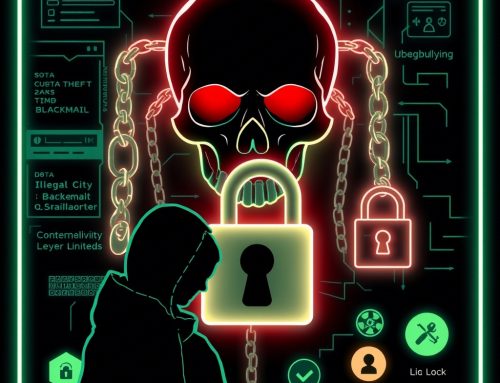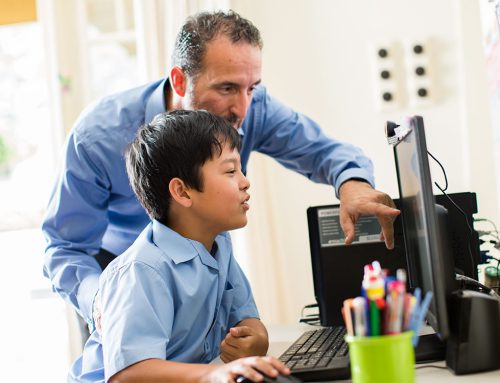The internet has become an integral part of our lives, offering kids access to incredible opportunities, knowledge, and social connections. However, this digital era also presents a range of risks for children, including cyberbullying, online predators, and exposure to inappropriate content.
It is more important than ever for parents to take a proactive role in teaching kids about online safety and creating a secure digital environment for them. Curious about where to start? Here are five actionable tips to protect your kids in the online world while empowering them to use technology responsibly.
1. Set Clear Rules and Boundaries
One of the most effective ways to keep your kids safe online is by establishing clear rules and boundaries regarding their online activities. This means setting specific guidelines for internet usage and consistently communicating these expectations.
Here are some examples of rules parents might enforce:
- Setting time limits on devices or internet usage each day.
- Defining which websites, apps, and social media platforms are allowable.
- Outlining what personal information should never be shared online.
- Establishing consequences for breaking online safety rules.
When kids know what’s expected of them, it creates an atmosphere of structure and accountability. These boundaries also help minimize risky behaviors, such as falling for online scams or interacting with harmful content.
But this is not just a one-time step. Over time, as your children grow and explore new digital experiences, it’s important to revisit and adjust these rules together. Building an ongoing conversation ensures they understand the importance of safe habits while respecting the digital boundaries you’ve put in place.
2. Use Parental Controls
Parental controls can act as your first line of defense in protecting kids online. These tools—built into most devices and internet service providers—allow parents to monitor and restrict their children’s online activity.
How Do Parental Controls Help?
- Blocking Harmful Content – Certain websites or media platforms can expose children to inappropriate material. Parental controls ensure access is denied to such content.
- Setting Time Limits – Control features allow you to limit screen time, ensuring kids don’t spend hours glued to their screens.
- Monitoring Activity – Keep tabs on your child’s viewing habits or browsing history to better understand their interests and address potential risks.
Some popular solutions include browser plugins, dedicated parental control software, and inbuilt device settings offered by platforms like Android or iOS. Tools like Google’s Family Link or software such as Net Nanny are great starting points.
Be transparent with your kids about why you are using parental controls and explain how these tools aim to protect them. When they see this as a collaborative step toward their safety, they’re more likely to accept these measures positively.
3. Teach Them About Online Safety
Nothing beats empowering your kids with the skills to protect themselves online. By teaching them about online safety early on, you help them recognize potential risks and make informed decisions while browsing the internet.
Topics to Cover in Online Safety Education:
- Cyberbullying – Help kids identify the signs, understand its impact, and teach them how to respond if they or their friends are targeted.
- Privacy Awareness – Explain the importance of keeping private information—such as their address, school name, or passwords—off the internet.
- Recognizing Scams – Teach them how to identify phishing emails, suspicious pop-ups, or fake social media profiles.
- Content Boundaries – Discuss the risks of consuming inappropriate videos, articles, or games.
Tailor these discussions to your child’s age and level of understanding. For example, younger kids may need simpler language and direct examples, like not talking to strangers online, while teenagers might benefit from deeper conversations about privacy settings or managing their digital footprint.
Lead by example—your children will learn a great deal from observing the way you behave online. Model safe habits like double-checking privacy settings and avoiding oversharing personal details on public platforms.
4. Monitor Their Social Media Usage
Social media has become a primary mode of communication for kids and teens, offering both benefits and challenges. While these platforms help them stay connected with friends and express themselves, they also open the door to risks such as cyberbullying, emotional distress from comparison culture, or interactions with strangers.
How Parents Can Monitor Social Media:
- Regularly check which platforms your kids are using and review their profiles.
- Talk to your kids about the type of content they share—ensure they avoid oversharing personal details like their location, phone number, or photos with identifiable backgrounds.
- Discuss online etiquette, including kindness and respect when interacting with others.
- Encourage them to alert you immediately if they experience or witness inappropriate behavior online.
Apps like Bark or Qustodio help parents monitor social media activity without being overly invasive. However, emphasize trust and transparency by explaining that your role is to guide, not to invade their privacy.
Remember, checking in with kids regularly builds an open environment where they feel comfortable discussing their online experiences with you.
5. Lead by Example
Your own online habits are powerful teaching tools. Kids often mimic their parents, so demonstrating safe and responsible online behavior can leave a lasting impact.
Ways to Set a Positive Example:
- Be cautious about the information you share on social media—this teaches kids to value privacy.
- Avoid posting or sharing inappropriate or impulsive content, encouraging thoughtful online behavior.
- Practice good cybersecurity habits, such as using strong passwords and enabling two-factor authentication.
Additionally, take time to educate yourself about online safety. As the digital landscape evolves, staying informed will allow you to better guide your kids in navigating technological changes. Share what you learn with them in a collaborative way, rather than as a lecture.
Open communication, grounded in empathy and trust, is the foundation of any successful online safety strategy. When your kids see you setting these positive habits, they’re more likely to follow suit.
Empower Your Kids for the Digital World
Keeping your kids safe online doesn’t mean restricting them from the digital world—it’s about giving them the tools to explore responsibly. By setting clear rules, using smart technologies like parental controls, educating them on risks, and involving yourself in social media monitoring, you can create an online environment that is supportive and secure.
Above all, remember that fostering an ongoing dialogue about their digital lives builds the trust and confidence they need to make safe choices on their own. With your guidance, they can fully enjoy the opportunities the internet offers while staying safe from its risks!





